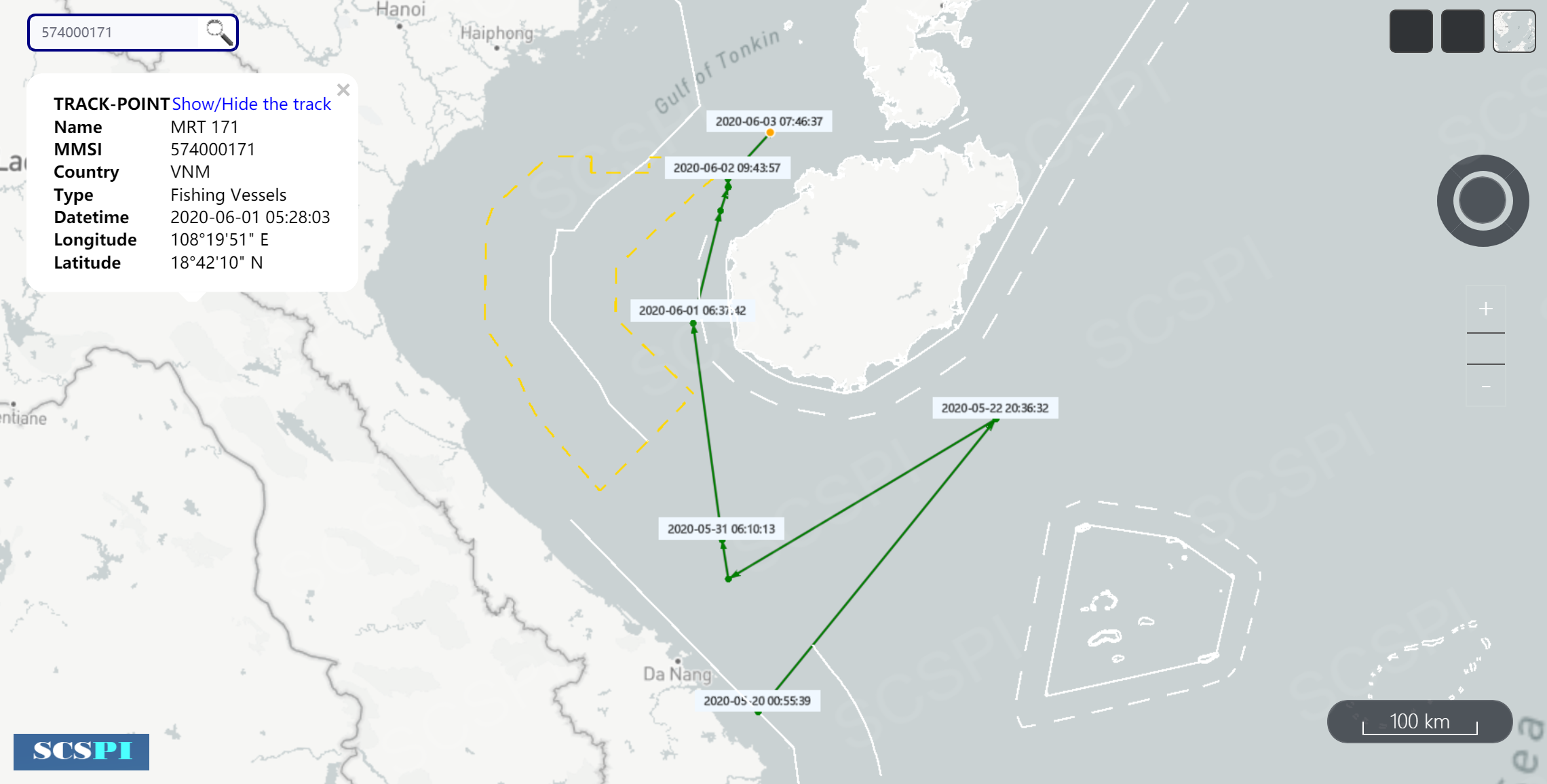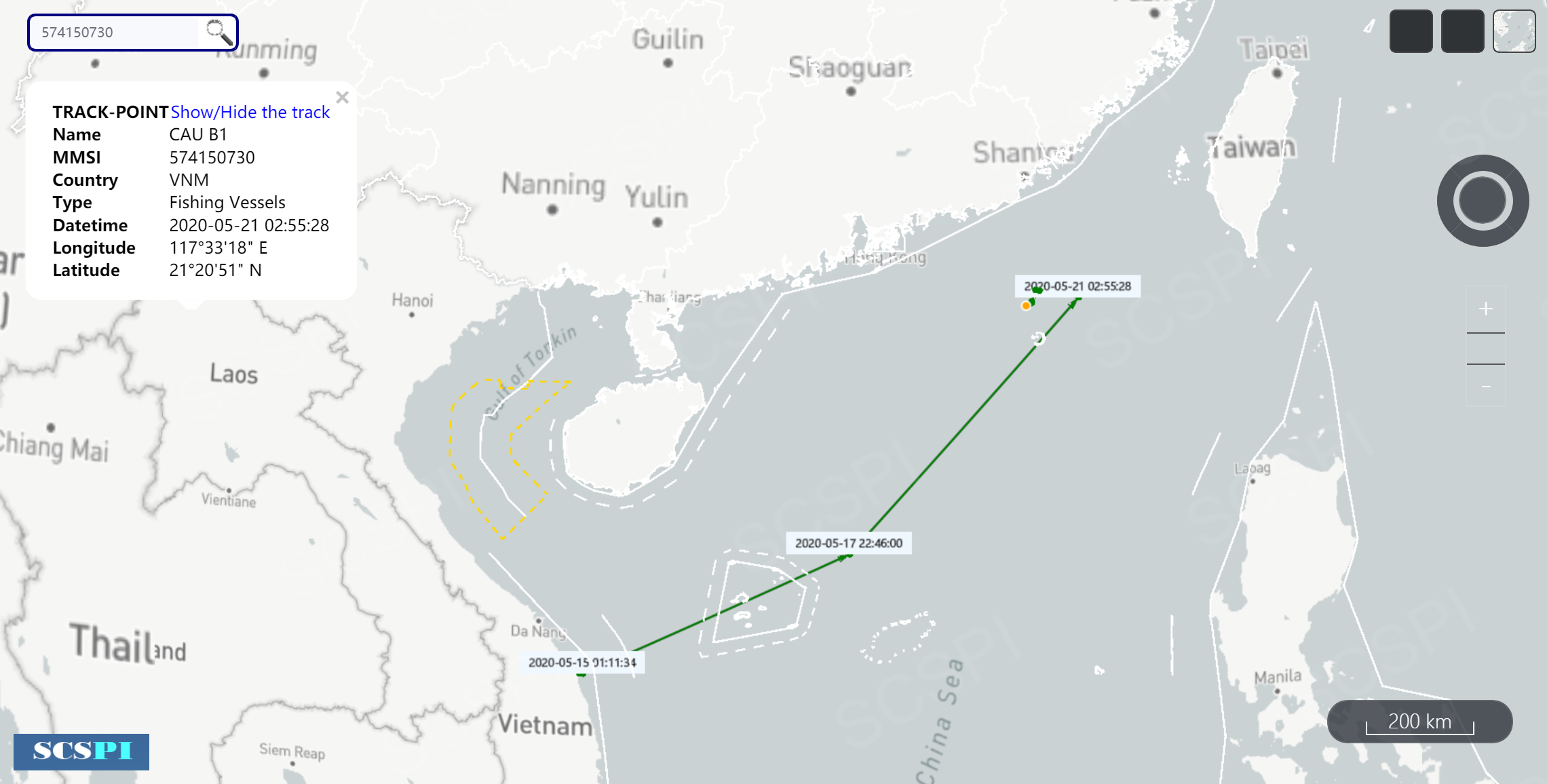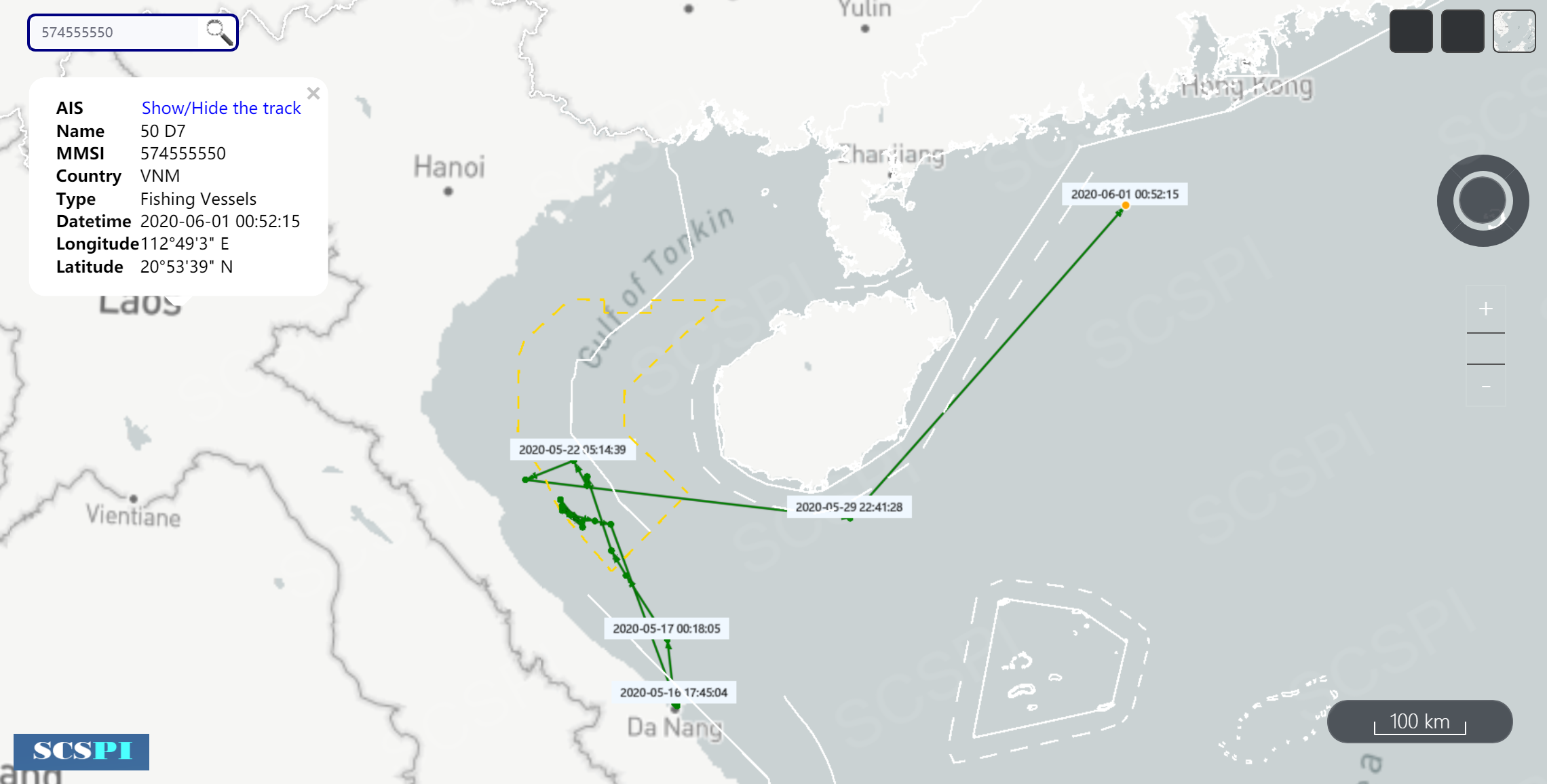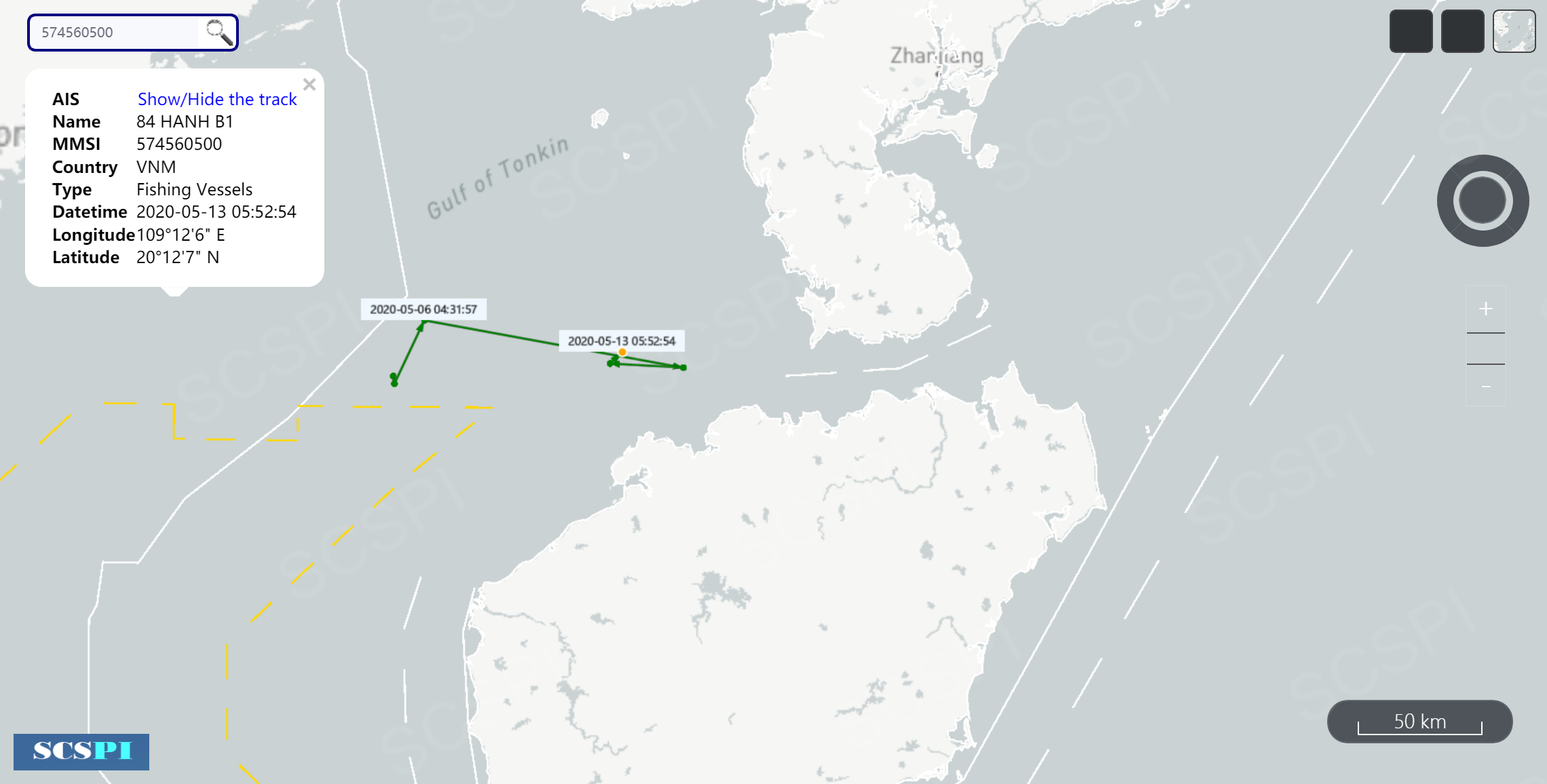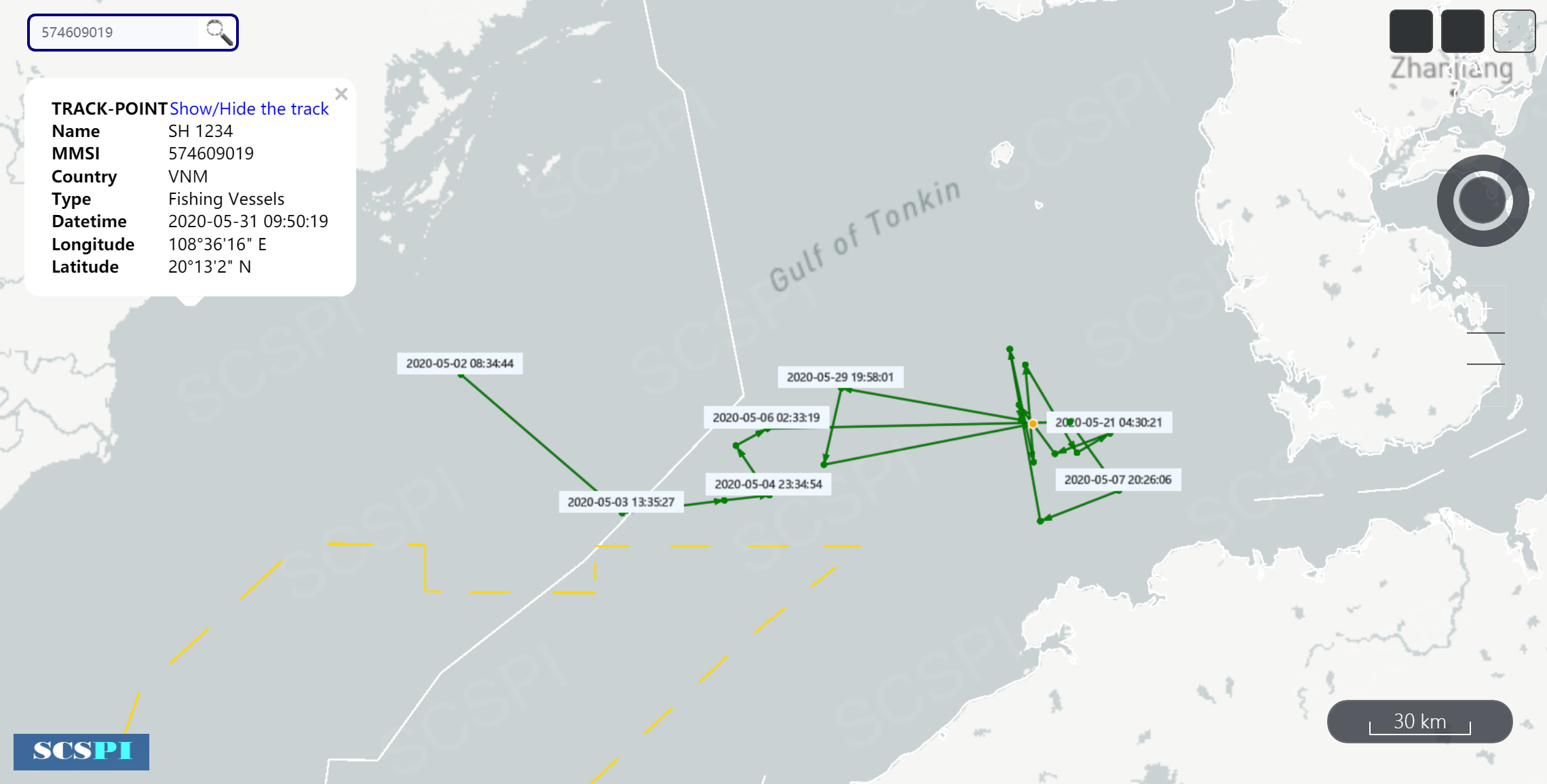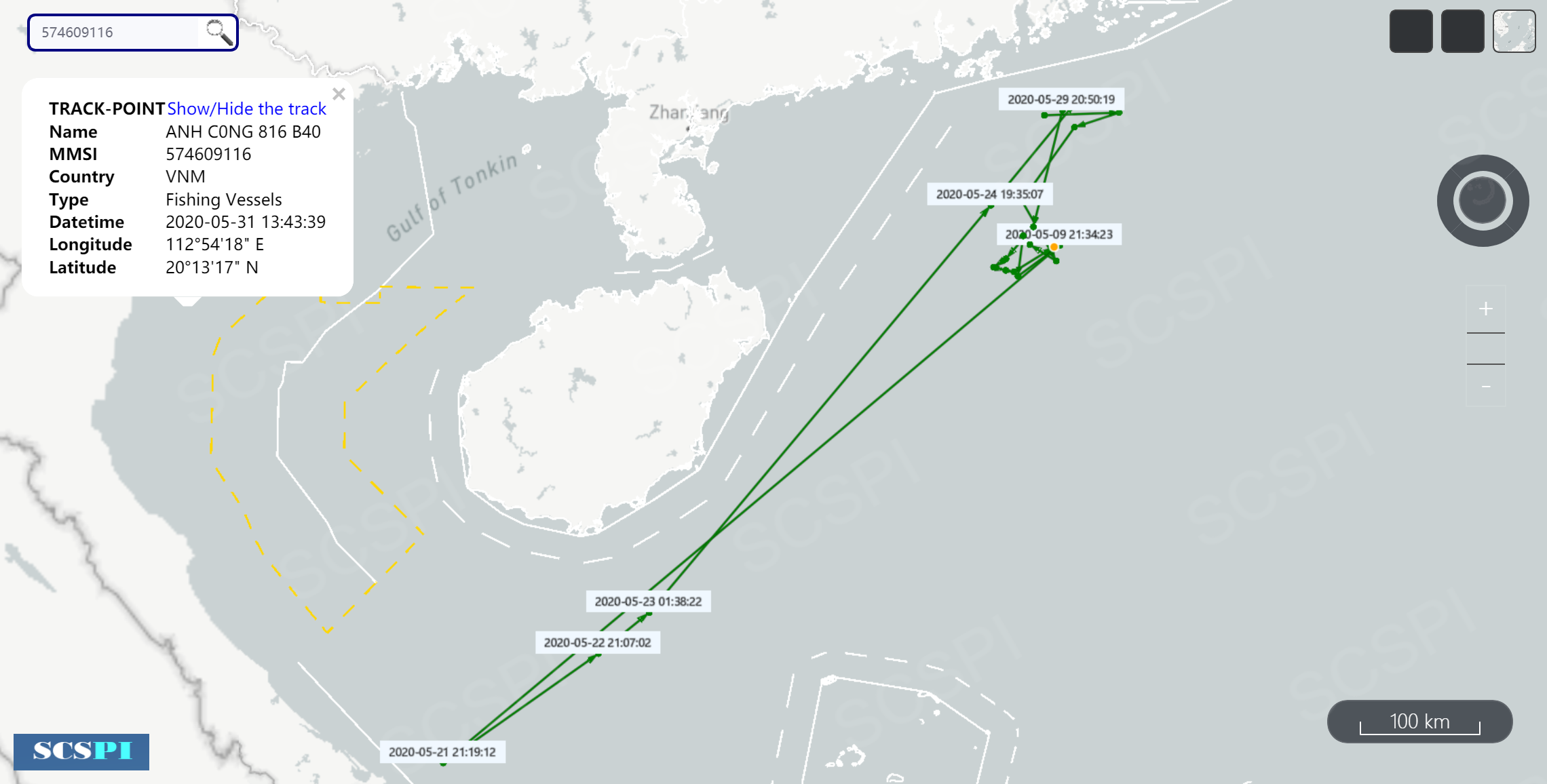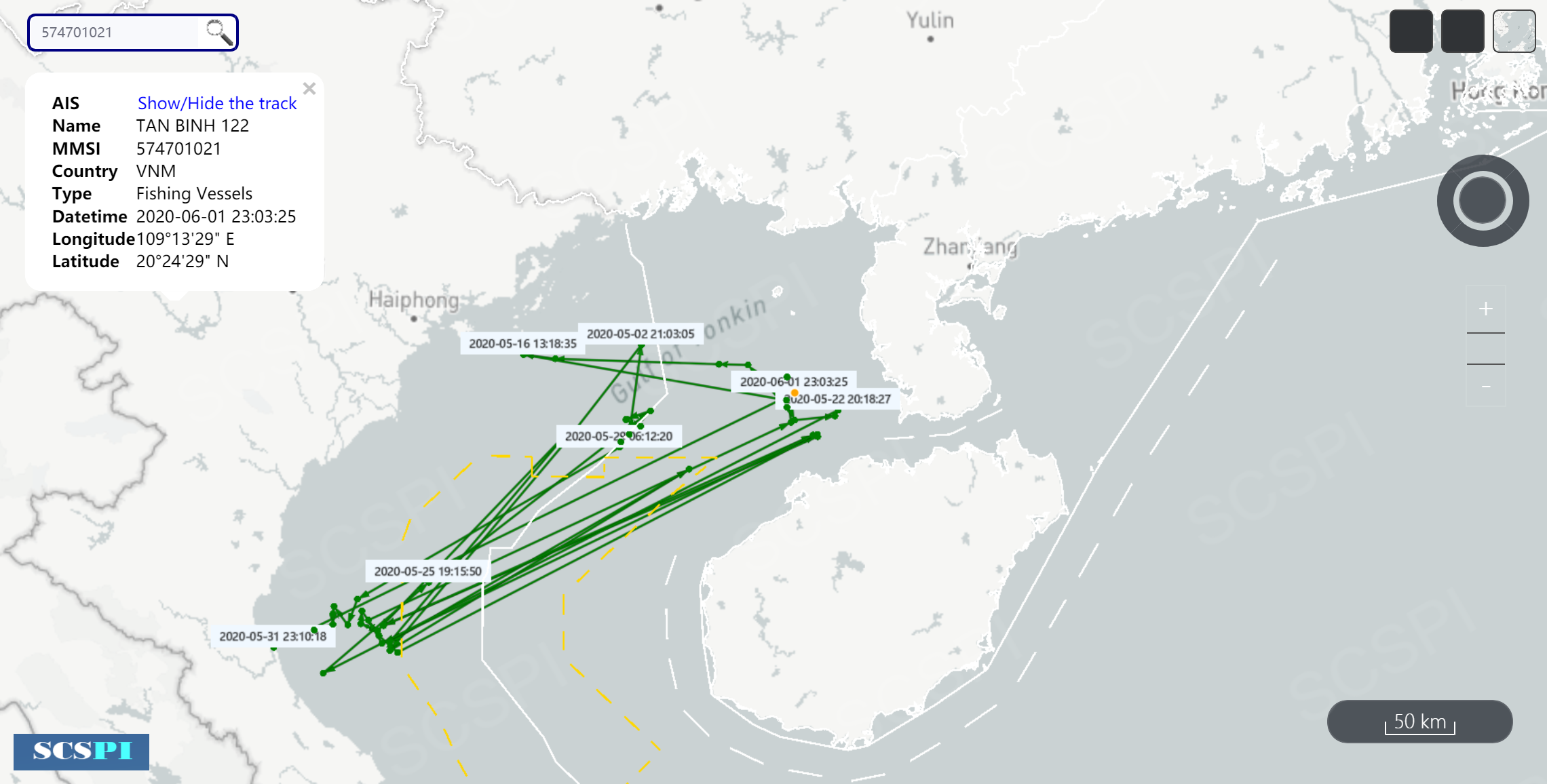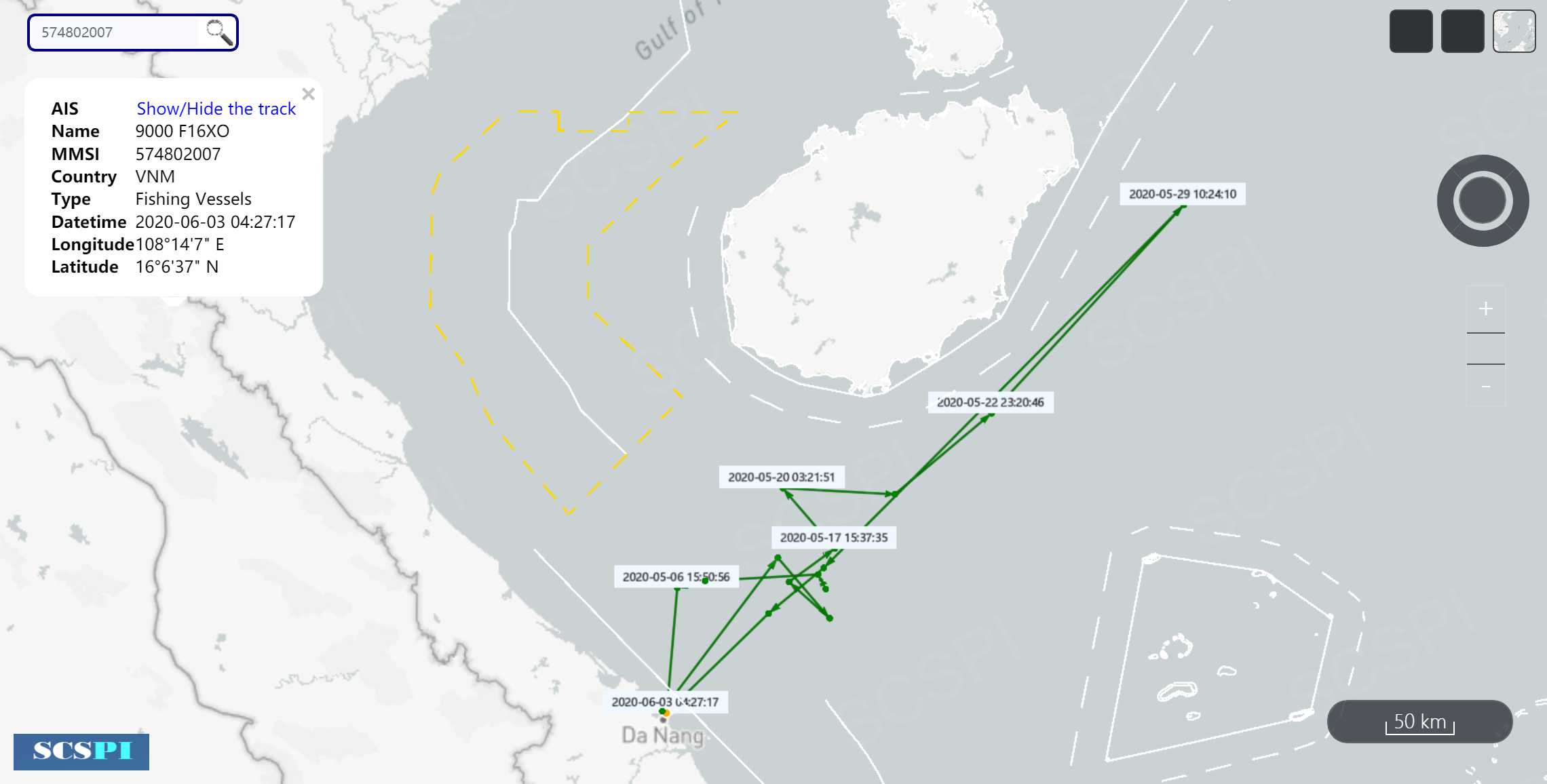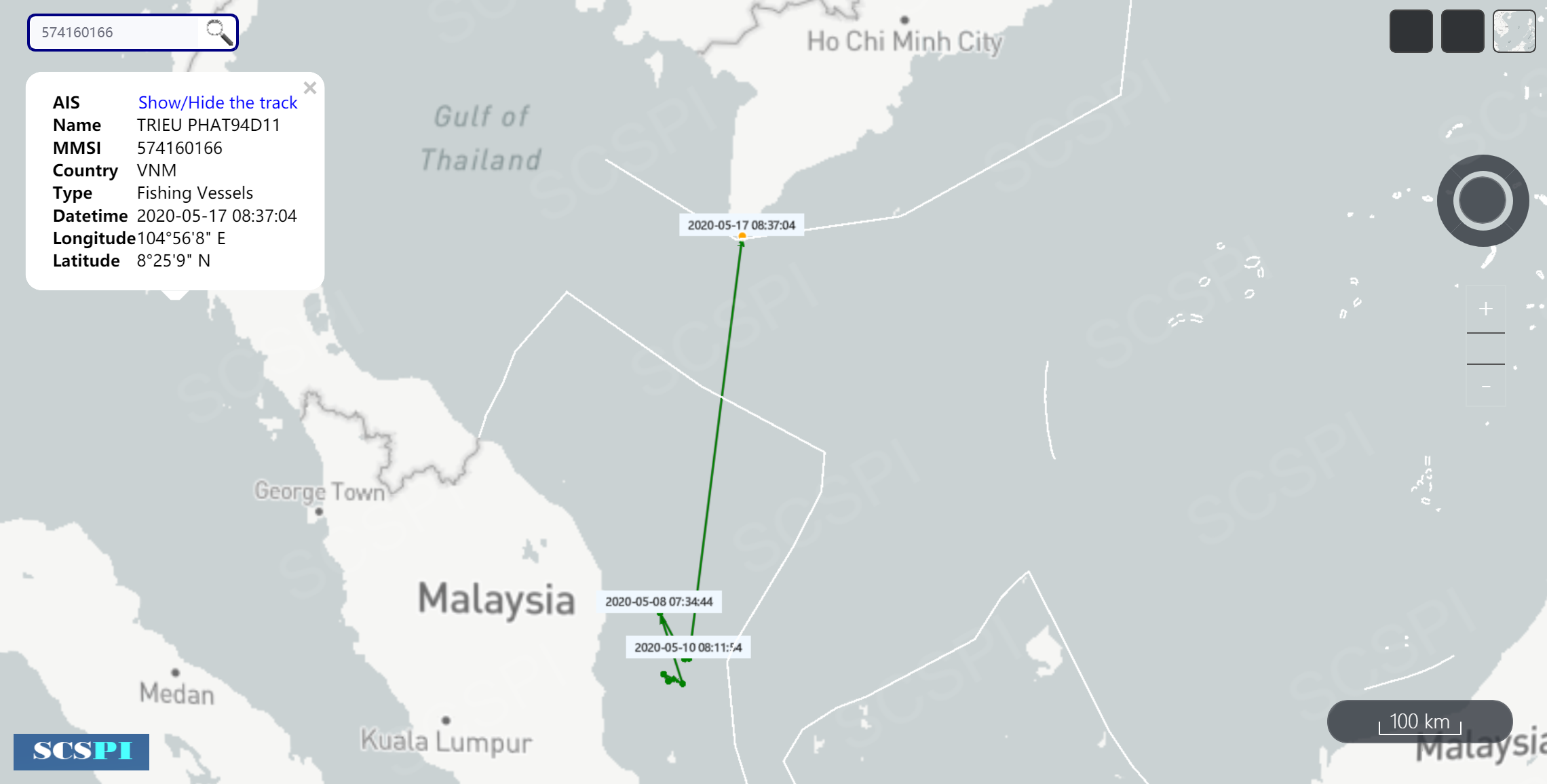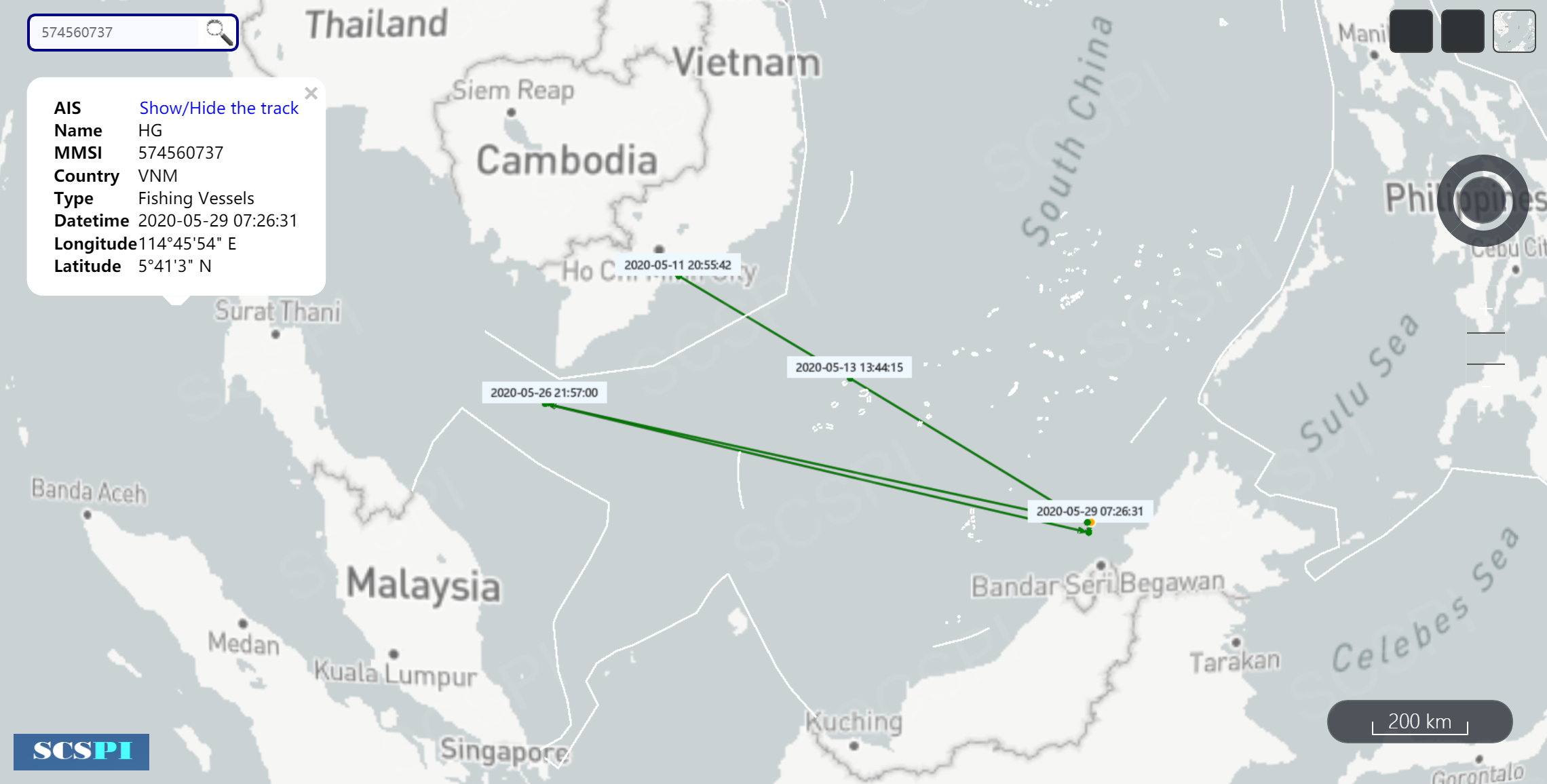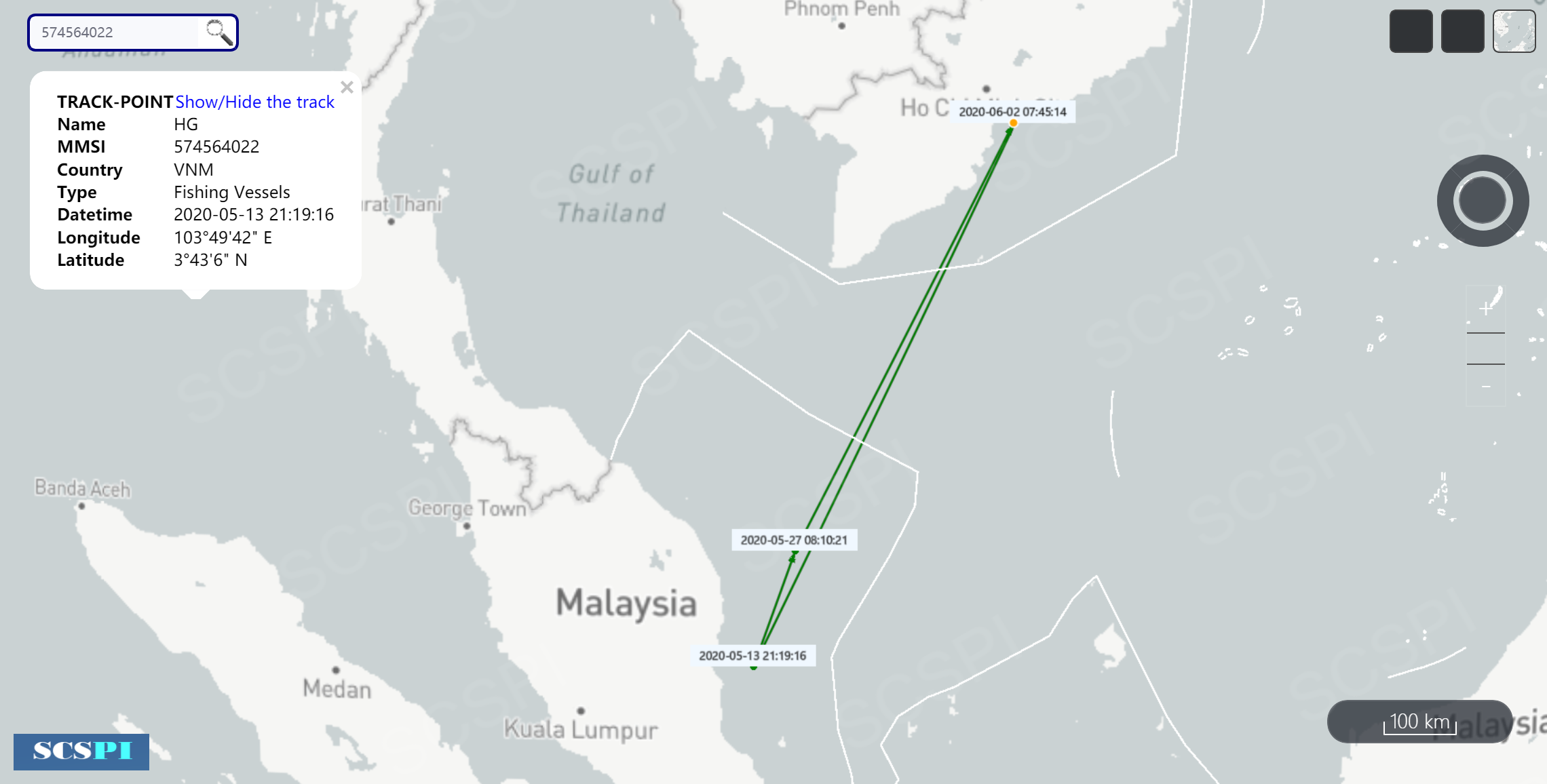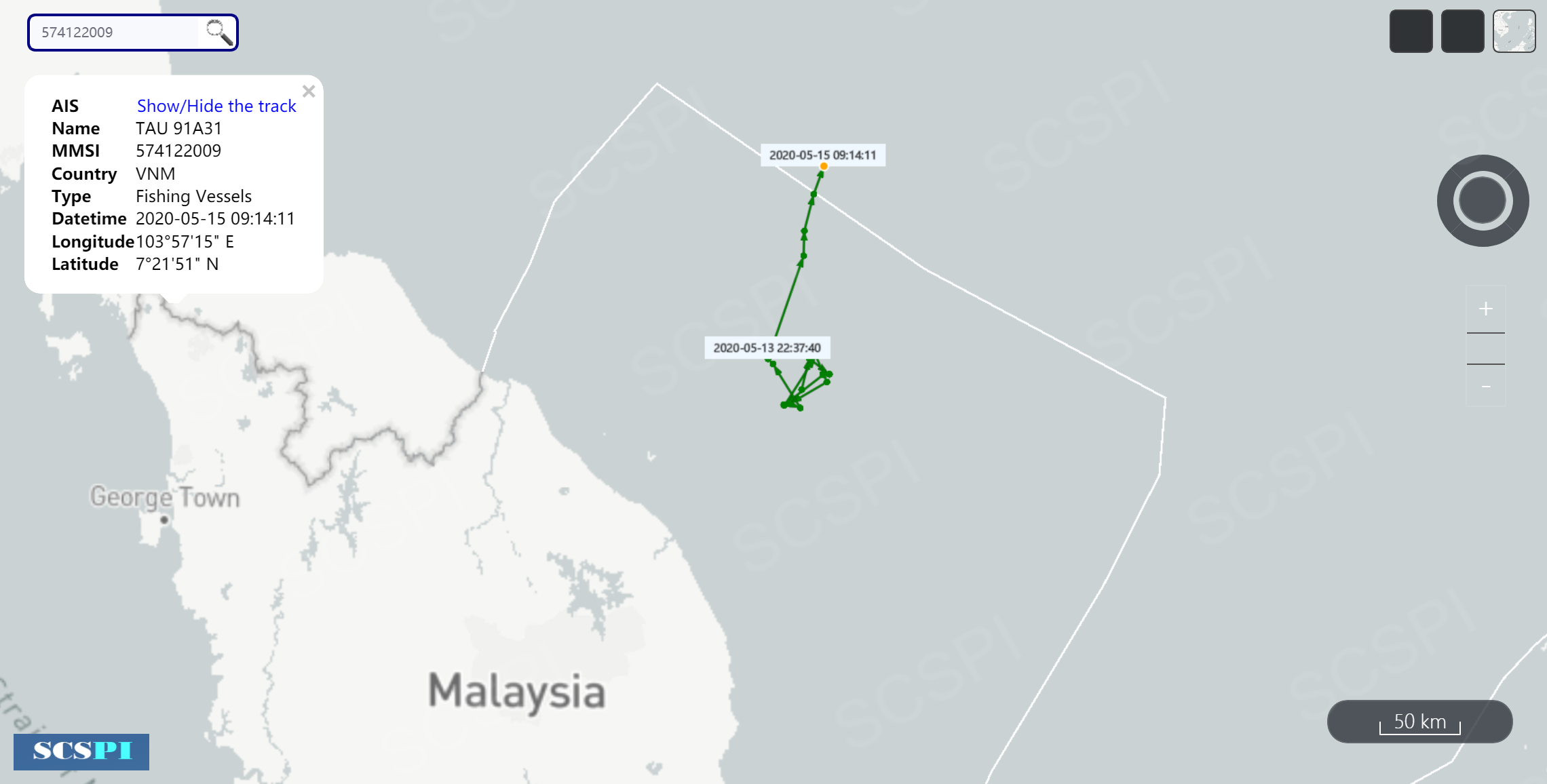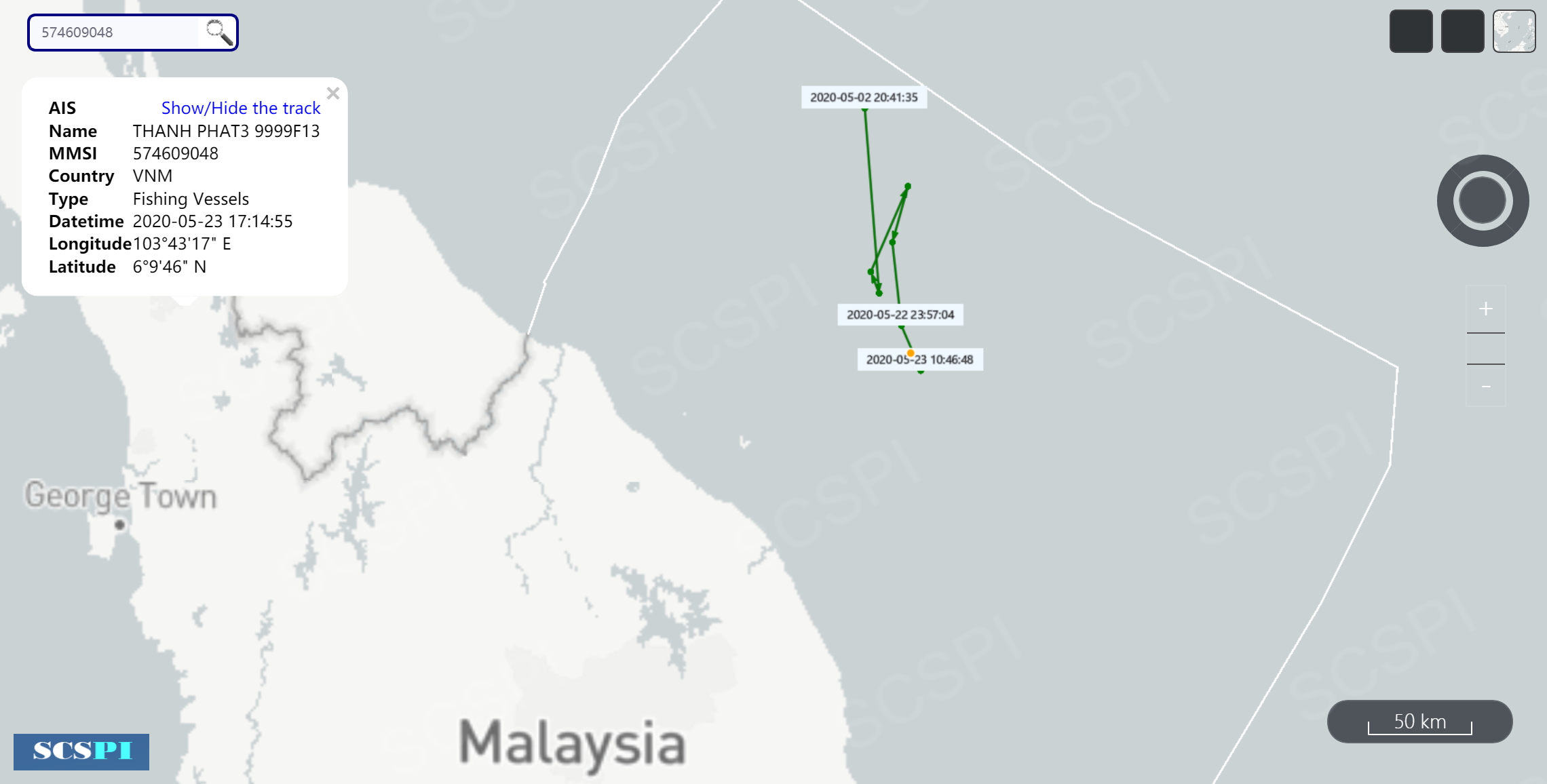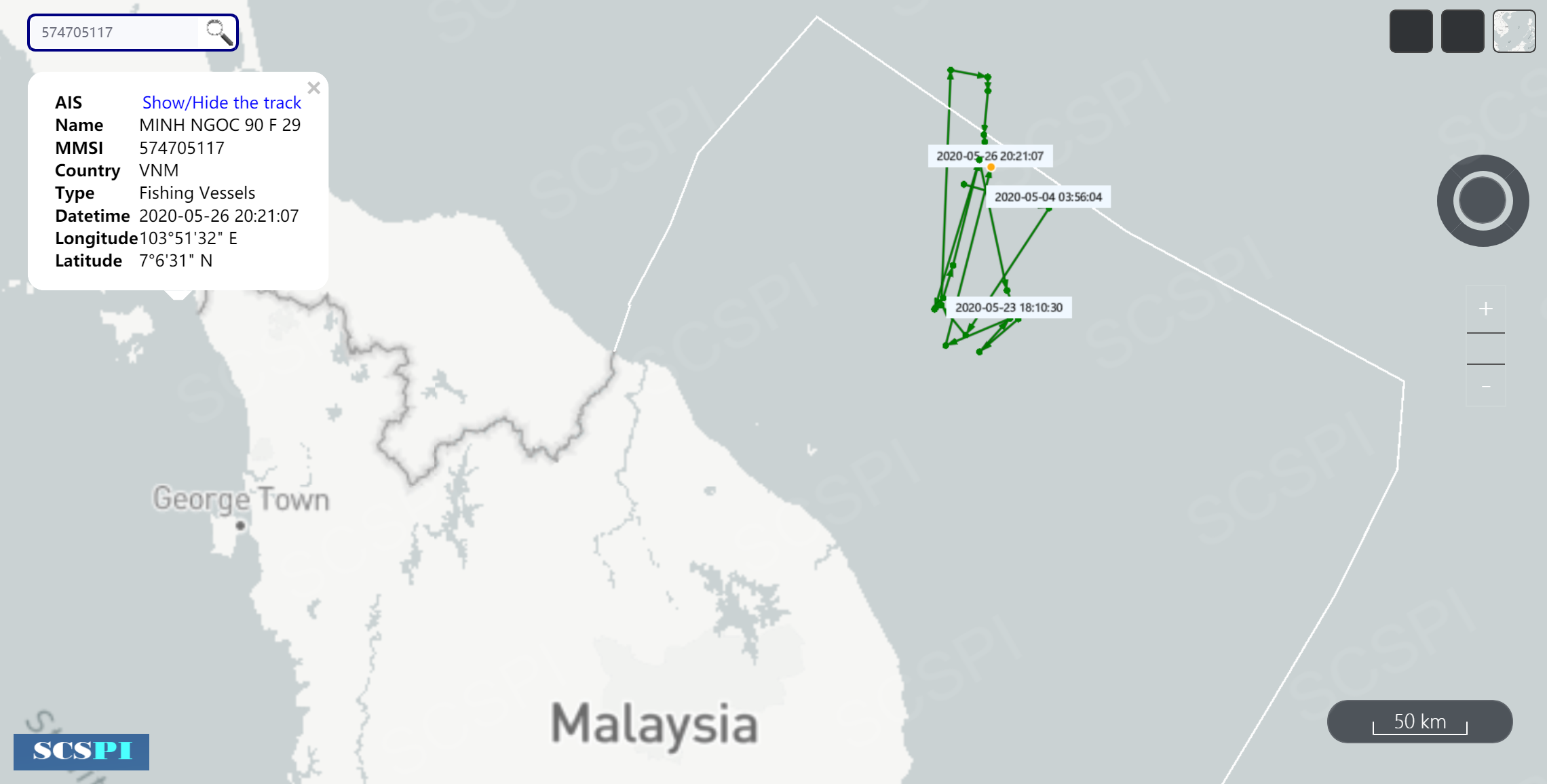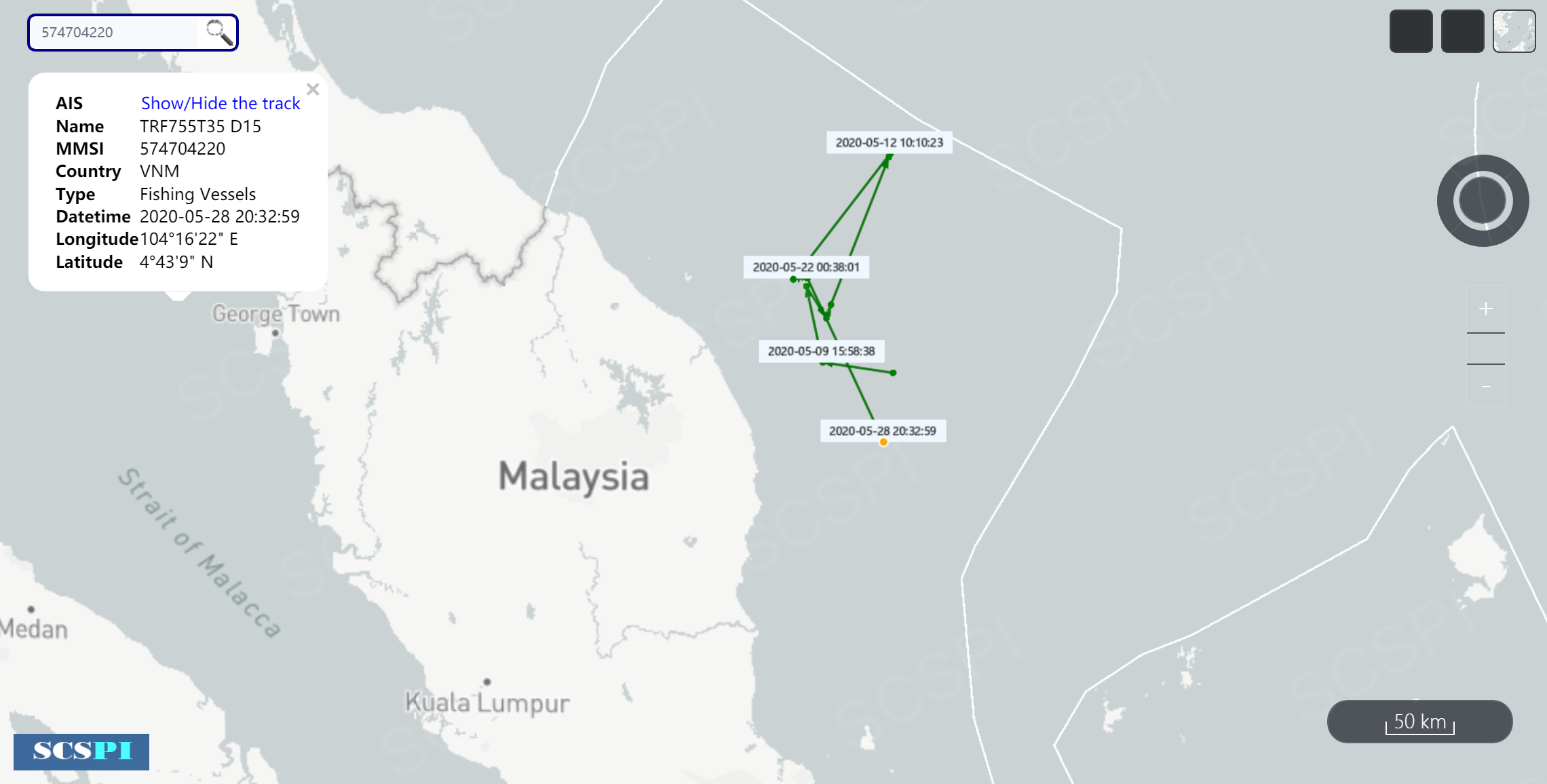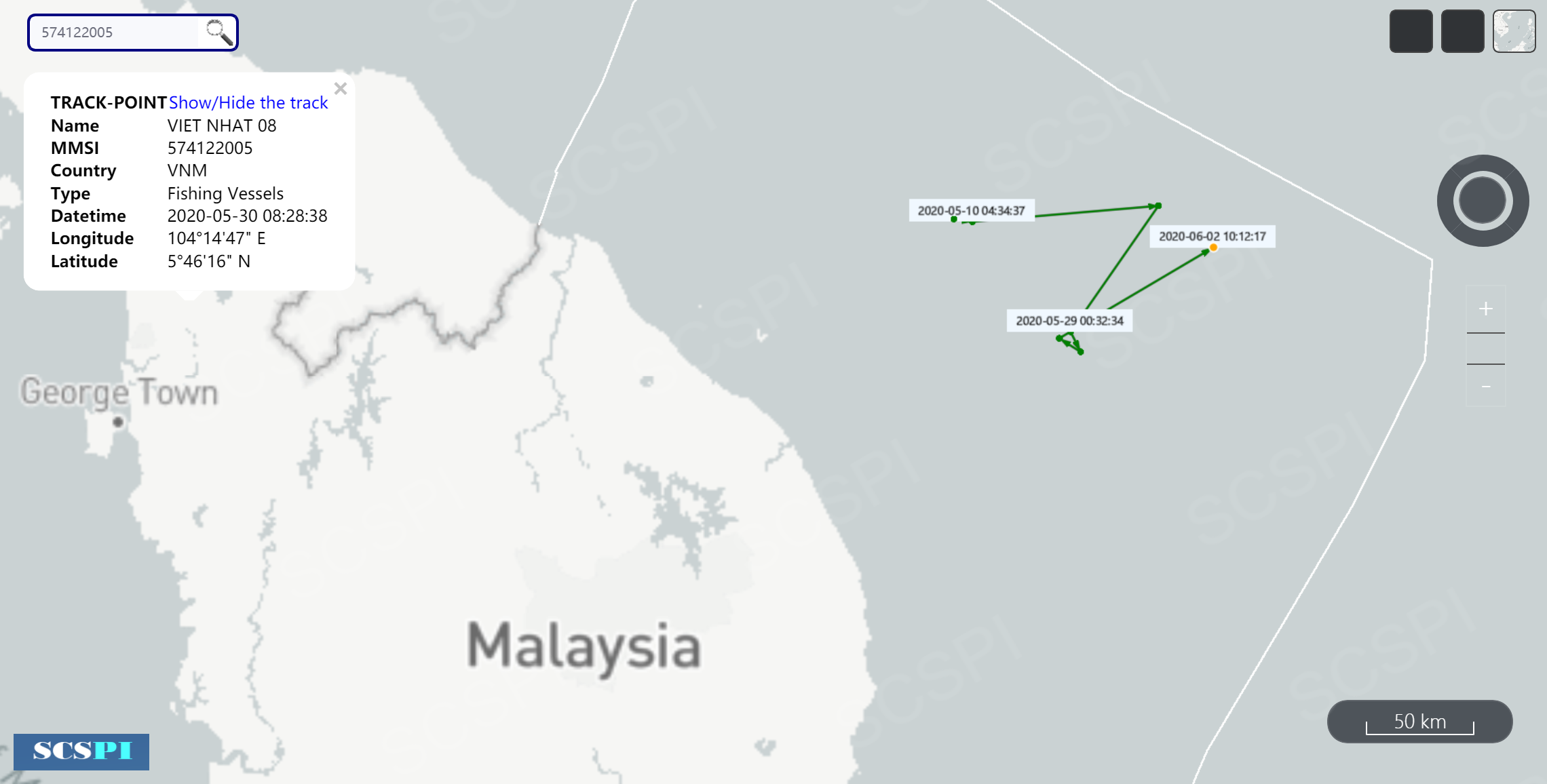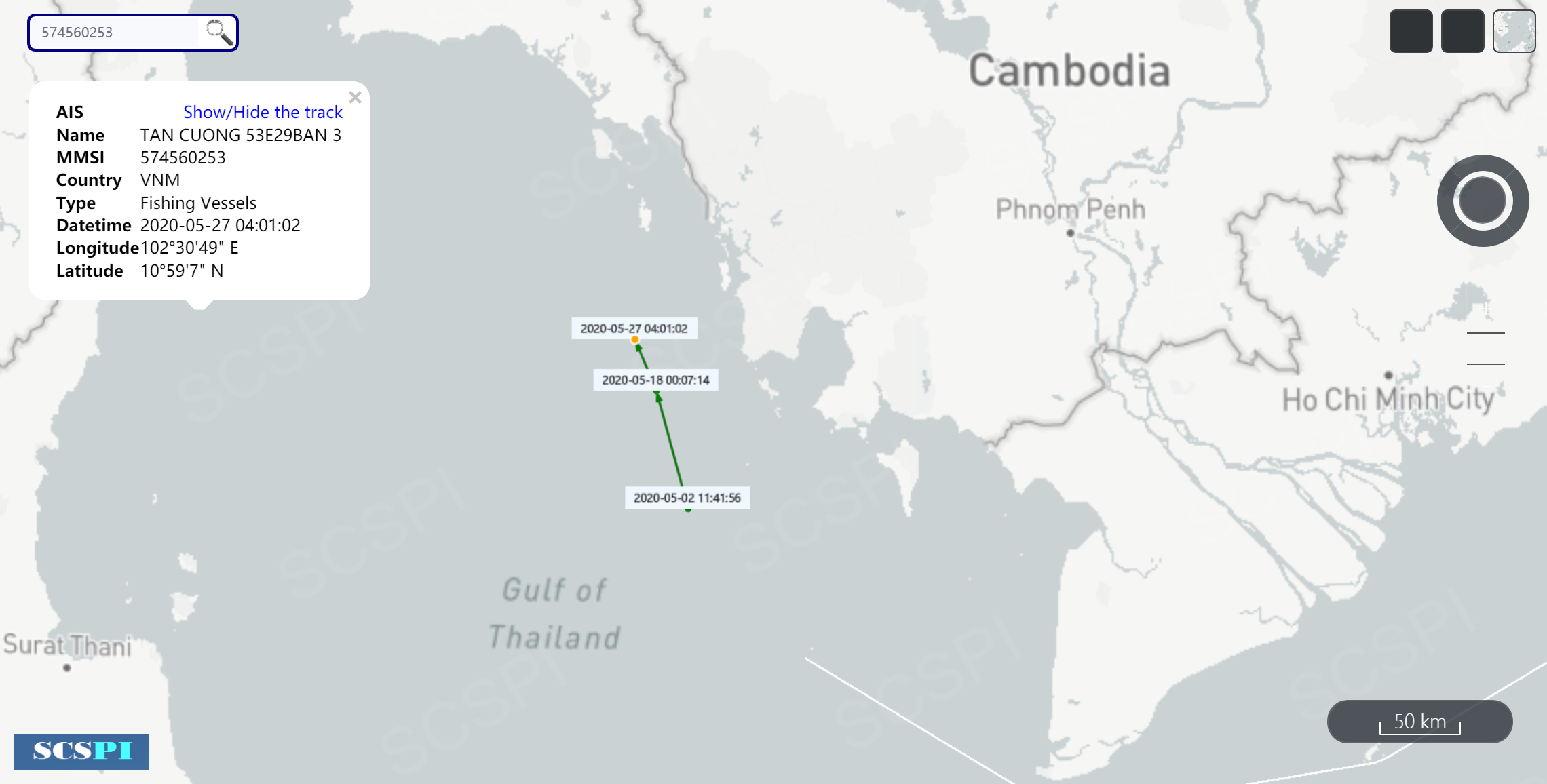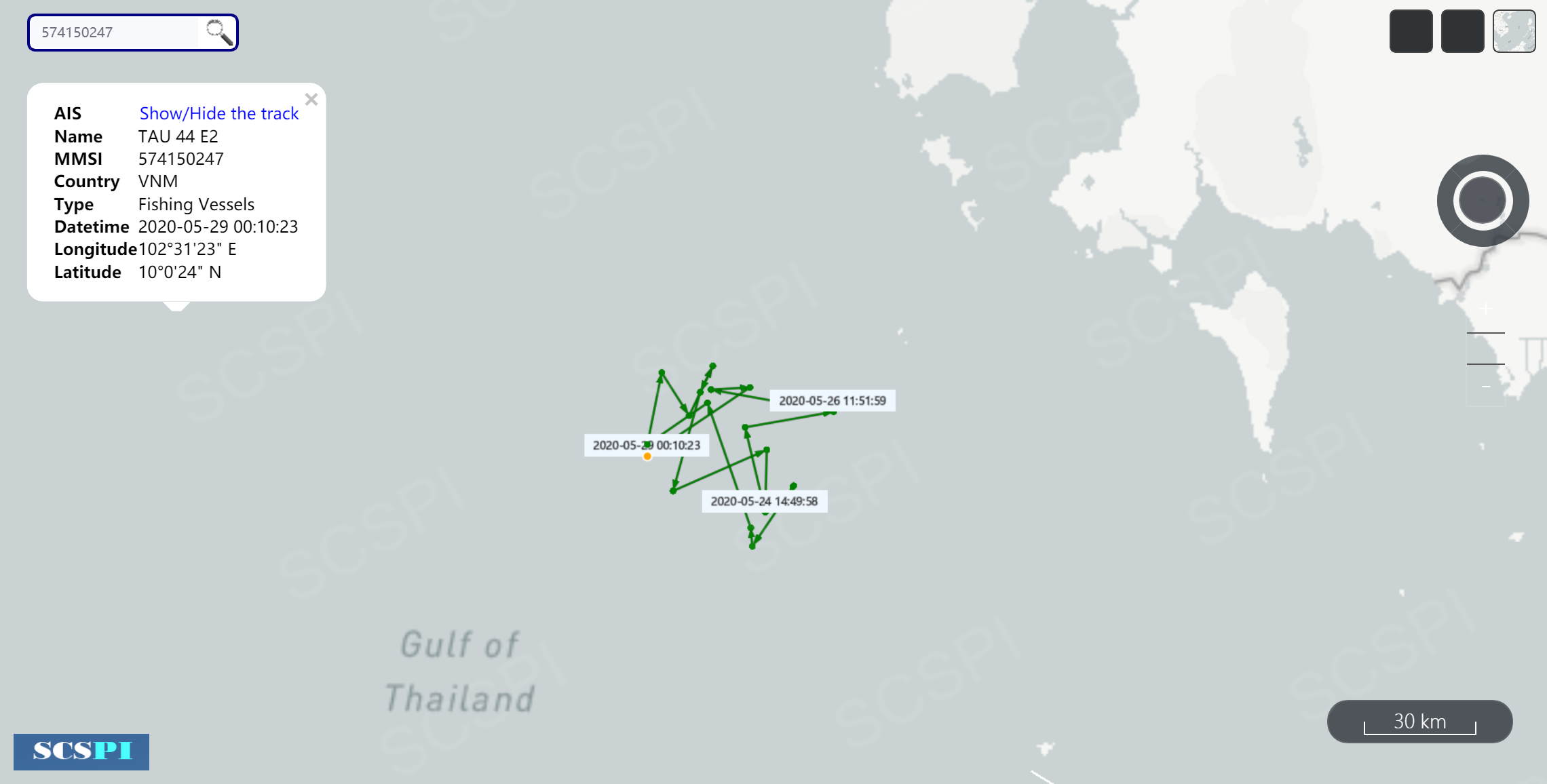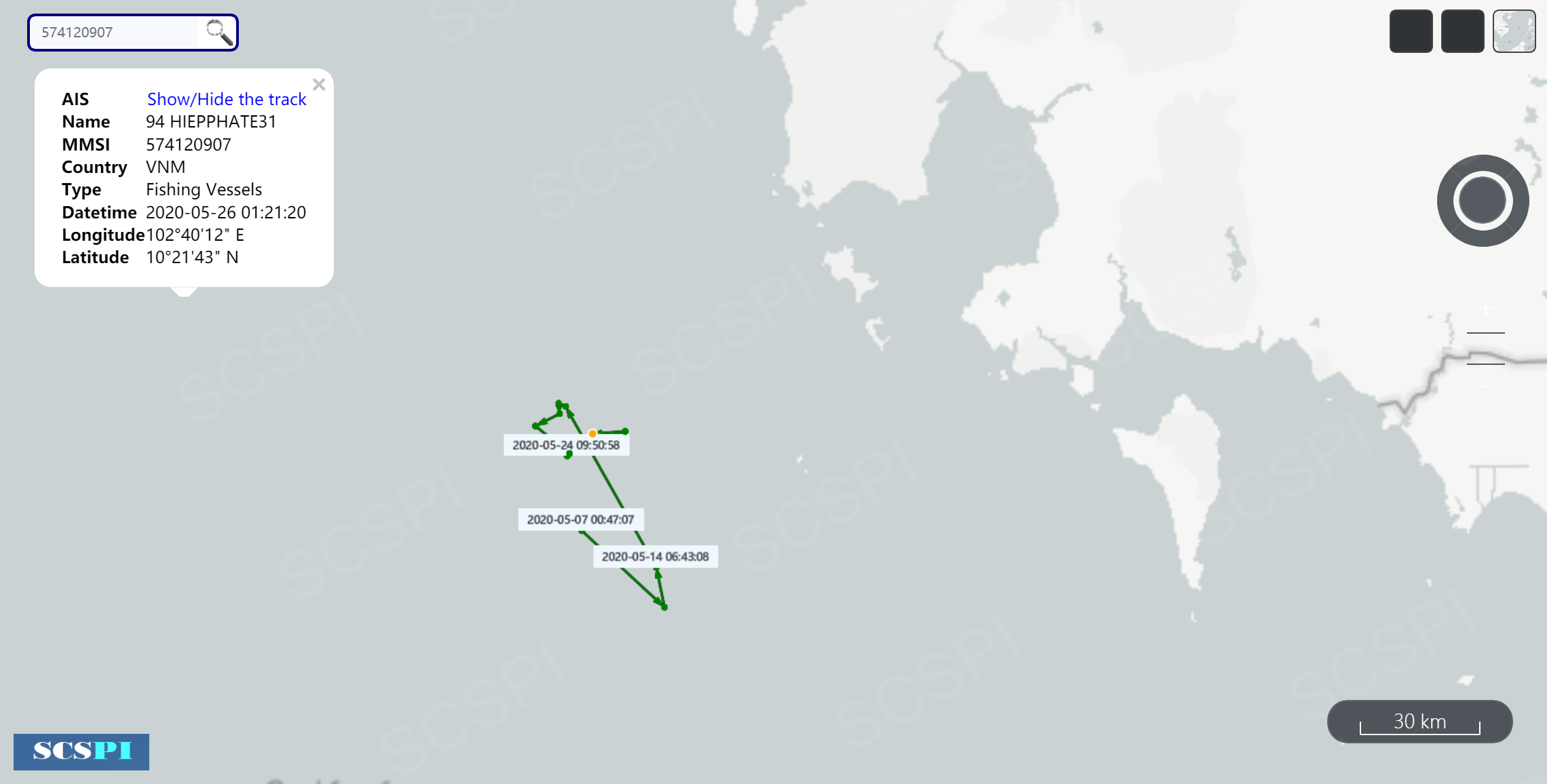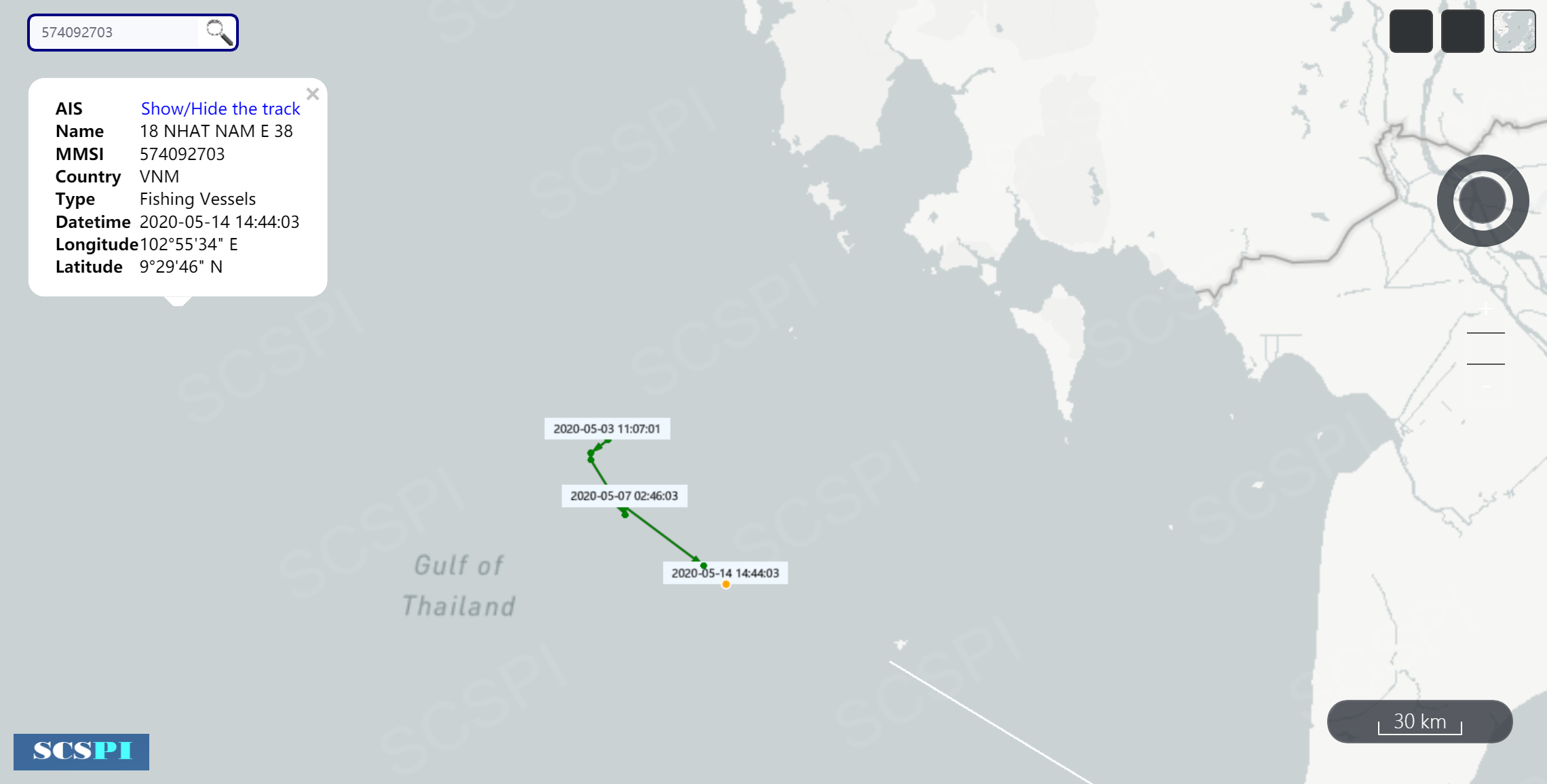In May, a total of 136,512 tracking points of 9,579 Vietnamese fishing boats were recorded by AIS in the whole South China Sea including the Gulf of Thailand. There has been a small rise in number compared with that in April, which is 88,182 tracking points of 9,208 vessels, while not much has been changed in overall distribution. The activities of Vietnam’s fishing vessels remain one of the most intensive in the South China Sea, no matter in terms of scope or quantity. Of course, as we have often pointed out, given that not all Vietnamese fishing vessels are equipped with AIS transponders and which in some cases might be turned off as well, the actual the situation will only be more complicated.

Tracking points shown in the figure above also contain normal activities of Vietnamese fishing vessels within their own waters and international waters, which is legally blameless. Beyond this, many of them do have intruded into waters of China, Malaysia, Indonesia, Cambodia and the Philippines which are clearly non-disputed with Vietnam.
Chinese Waters near Hainan Island
Last May saw a surge of Vietnamese IUU fishing activities near the waters of Hainan, with at least 569 of them intruded into the Beibu Gulf on the Chinese side (excluding those operated in the Sino-Vietnamese common fishery zone), the territorial seas and internal waters of Hainan and Guangdong, as well as the area within 30 nm of the exclusive economic zones (EEZs) off the territorial sea of Hainan’s southeastern waters, 24 of which intruded into China’s territorial seas and internal waters, basically static with that in April.

Download full AIS records of 569 Vietnamese fishing vessels here
In terms of distribution, there was a mass of them gathering in the Beibu Gulf, and a slight increase in the southern waters of Hainan, while those in the waters of southeast of Hainan or Guangdong continued the downward trend compared with that in March and April.
Vietnamese fishing activity around Hainan gives a tasty of the rampancy of its whole IUU, whose surge in May came against the back ground of China Coast Guard special operation “Drawing Sword 2020”, which was launched alongside with the summer fishing moratorium to strengthen the law enforcement with intensified crackdown on illegal activities including IUU. So far, remarkable progress has been seen in the fight against Vietnamese IUU in the territorial seas, while the EEZs remains a long way to go.
Part of the Waters of Malaysia and Indonesia
A total of 302 Vietnamese fishing vessels were tracked to have intruded into the boundary waters of West Malaysia and Natuna Islands of Indonesia in May, demonstrating nearly a 40% decrease compared with 474 in April, most of which gathered near the territorial seas delimited by the Malaysian government.

Download full AIS records of 302 Vietnamese fishing vessels here
Apparently, Vietnam has shown some restraint in this region after the collision with Indonesian law enforcement vessel on April 19.
Waters of Cambodia
Additionally, those intruded into the waters of Cambodia in the Gulf of Thailand has also decreased to 178 in May from 240 in April.
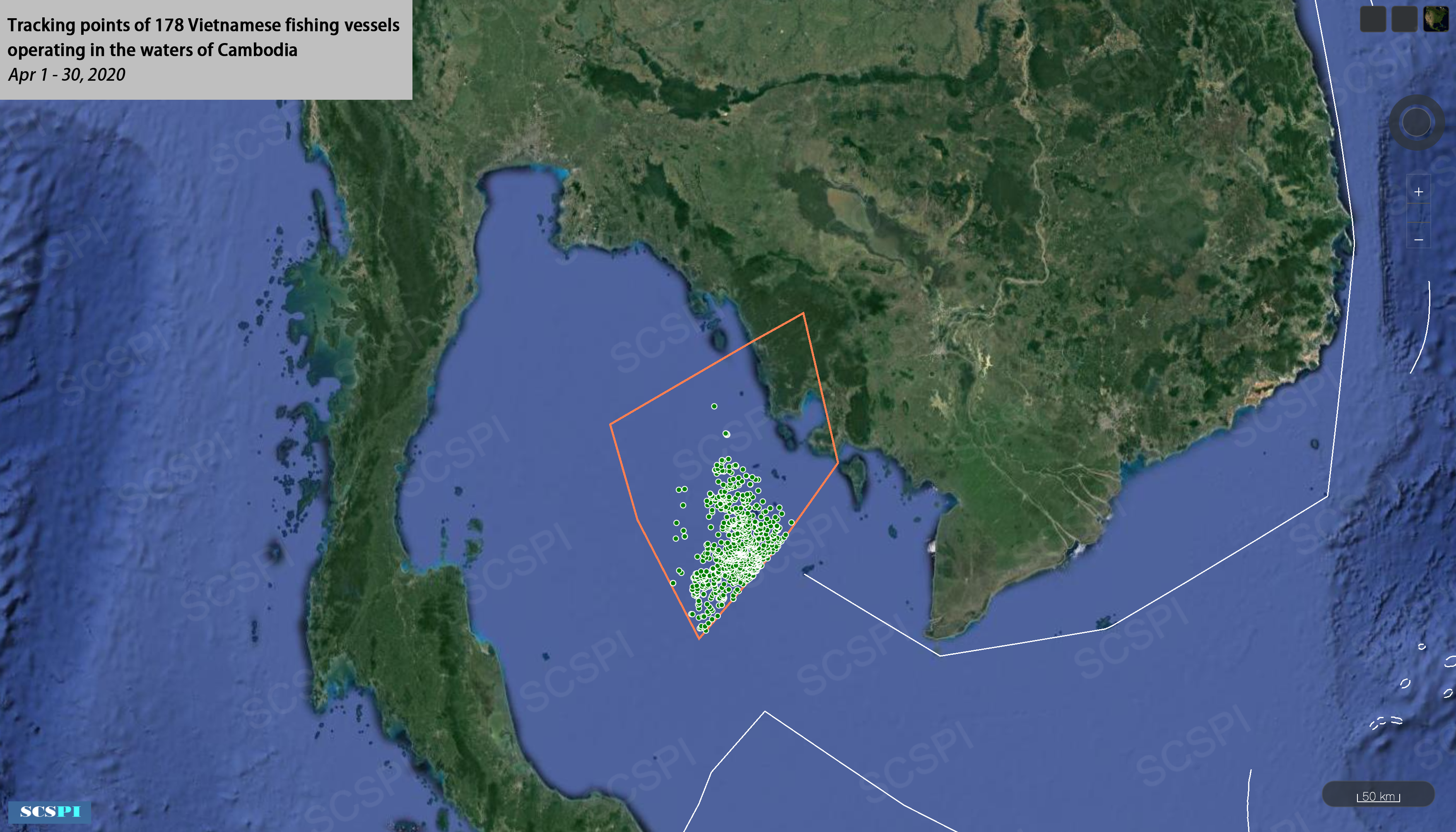
Download full AIS records of 178 Vietnamese fishing vessels here
As China kicked off summer fishing moratorium on May 1, Vietnamese fishing vessels surged in the disputed waters of Spratly Islands, as well as non-disputed waters of Paracel Islands (which Vietnam deems disputed) and Hainan Island(which Vietnam agree as non-disputed) of China.
Vietnam has hardship to abandon its rampant fishing activities, of course, due to the stage of economic development, such as serious overcapacity, obstruction of aquatic economic interest groups and other factors. But more importantly, it is because that the Vietnamese government has attached too much importance on the strategic value and political significance of its “fishing force”.
Activities of its fishing vessels reflects Vietnam’s strategy to utilize the “fishing force” as a tool for exploiting maritime resources and declaring sovereignty in the South China Sea, such as the Spratly Islands, to which also can be testified from the context of its propaganda.
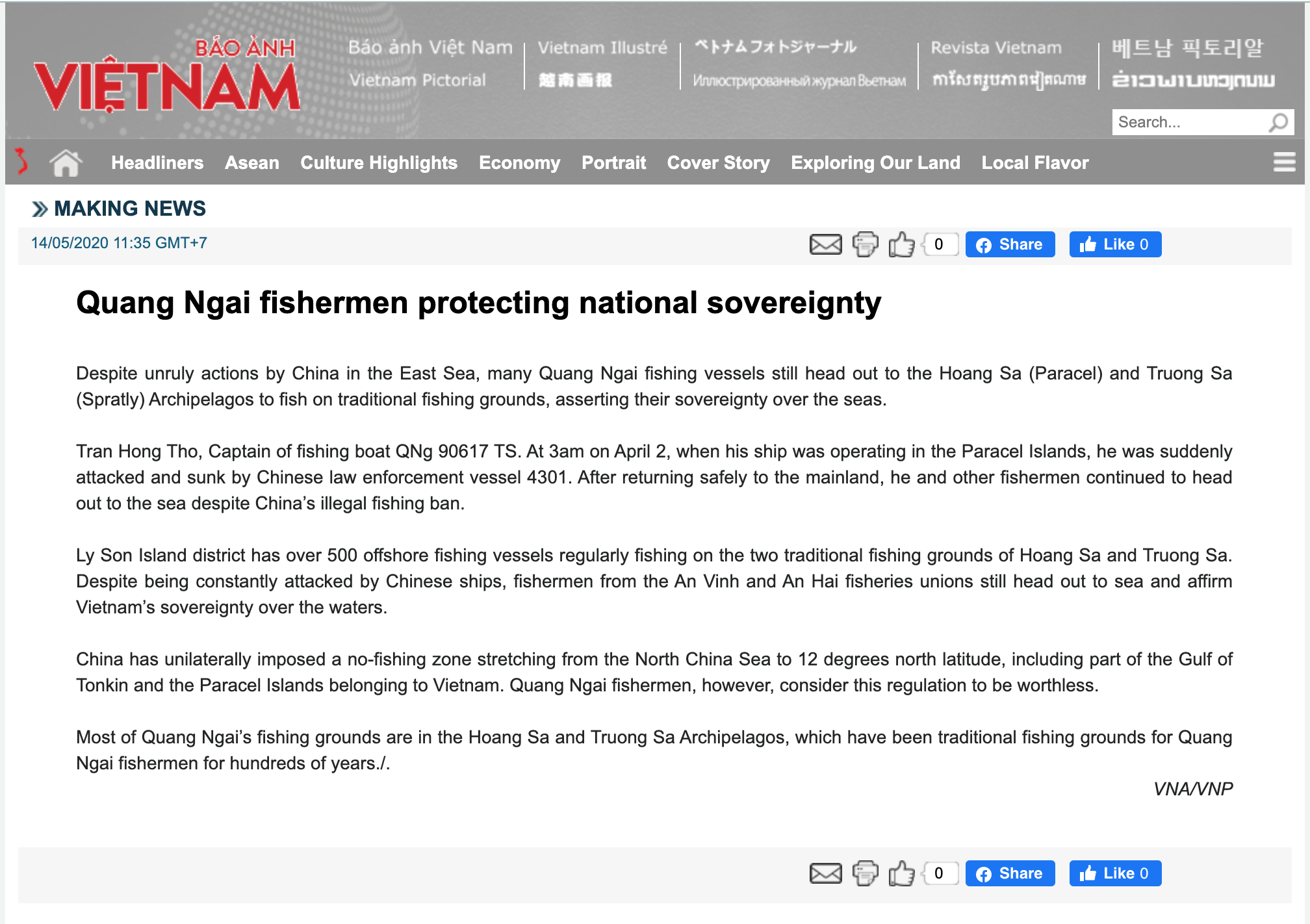
For instance, as it stressed in this piece of news from Vietnam Pictorial (Vietnam’s first publication for external service under Vietnam News Agency), that "Quang Ngai fishermen insist on going fishing to defend maritime sovereignty," while not forgetting to tout out the cliché of the Paracel incident of April 2 and China's summer fishing moratorium.
At present, Vietnam not only wants to improve its negative public image of IUU fishing, but also could not refuse the temptation to largely employ the fishing vessels out of the strive for maritime sovereignty. Meanwhile, the majority of fishermen and related interest groups are also not willing to give up their economic benefits. This dilemma is expected to continue for a long time in the future.
Appendix
Tracks of 20 typical Vietnamese fishing vessels conducting IUU in May, 2020
